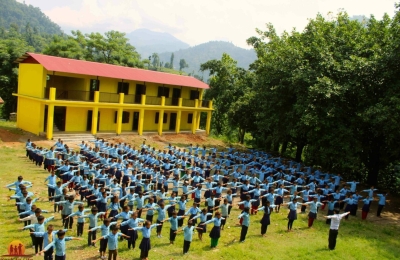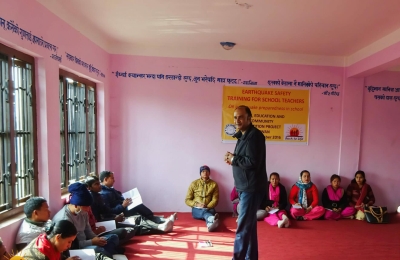EDUCATION & SCHOOLS
Why do we invest in school construction & education?
Education cannot be a privilege. Whether boy or girl, everyone has a right to education – from kindergarten to high school. With our education initiatives, we are doing everything we can to ensure that education and schools improve step by step, especially in disadvantaged, rural areas.
Urgent current challenges are to enable more children, especially girls, to complete secondary school and obtain a high school diploma, to increase the quality of school education at all levels, to make schools safe and child-friendly, to expand capacities for early childhood education and to protect children from child marriage and child labour.
Most children drop out after primary school
Although the numbers have improved over the last 20 years, there is still much to be done in the education sector. So far, only 61.9% of children in Nepal benefit from early childhood education (UNICEF, NPC 2019) and by no means all those who enroll in school actually complete it. On average, only 85.6% of children complete primary school and only about two-thirds of them make it to secondary school (NPC 2020). There are still very strong differences between urban and rural areas, boys and girls, and structurally disadvantaged minorities, such as the Dalits (people of the lowest caste, or casteless, formerly known as “untouchables”) and the rest of Nepal’s population. In remote areas, such as the high mountain region of Mugu, education lags far behind the national average. Too often, students here only have the opportunity to complete primary school, as secondary school is inaccessibly far away on foot. The cost of school uniforms and learning materials is also still a major hurdle for poor families.
-
86%complete elementary school
-
29%drop out of school before reaching 8th grade
-
13%of the third graders can read and understand the official language Nepali
-
1,6
MillionKids still in child labor -
40%of women aged 20-24 were already married by the age of 18
-
60%the schools are not earthquake-proof
To provide successful education, rural schools need an upgrade
In a poor country like Nepal, especially in the remote regions, the school infrastructure is still inadequate and does not meet today’s safety standards. Many buildings are dilapidated and too small, and the rooms are often not even equipped with tables and benches. The 2015 earthquakes dramatically worsened the education situation, with 30,000 classrooms completely destroyed and a million children suddenly without a school. In addition, teachers are often insufficiently trained, teaching methods are out of date, teaching materials are not suitable for children or are hardly available. The poor conditions demotivate both teachers and students. This has a particular effect on the children’s learning success. In rural areas, often less than half of children demonstrate age-appropriate reading skills and only one-third of students* are able to do math appropriate to their age (UNICEF, NPC 2019).


















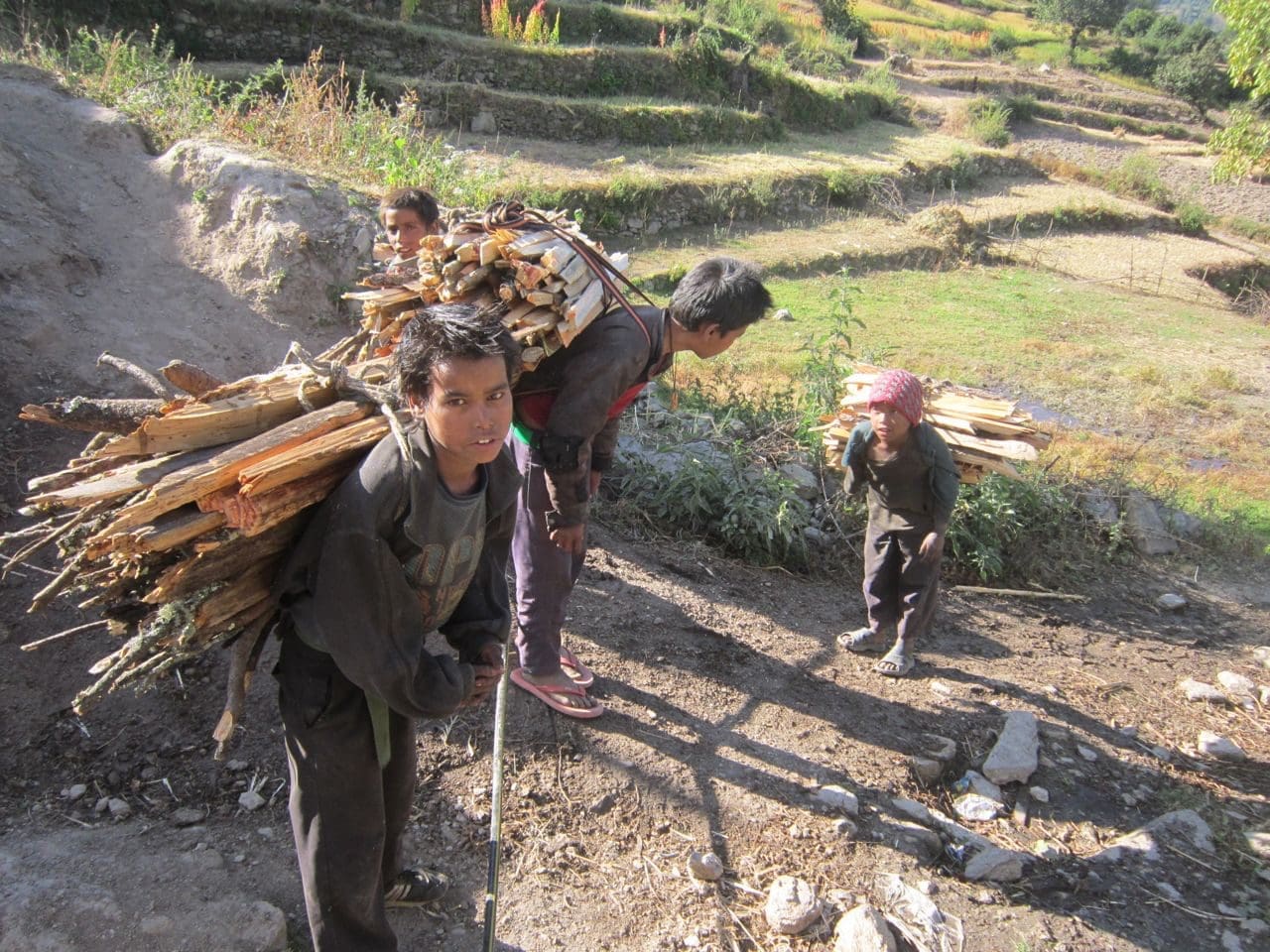















School Instead of Child Labor
Too many children still have to work from an early age on to contribute to the survival of the family and therefore cannot go to school at all or only with interruptions. This affects the girls particularly often. There are still around 1.6 million children between 6-17 years of age in child labor and around 620,000 of them carry out dangerous work. Here too, girls are disproportionately affected (ILO, 2017). Child marriage, which is forbidden by law but is still practiced, also deprives many of the right to education: According to UNICEF (2017), 40% of women in Nepal were already married by the age of 18, and 7% by the age of 15.
This is how Back to Life promotes education



















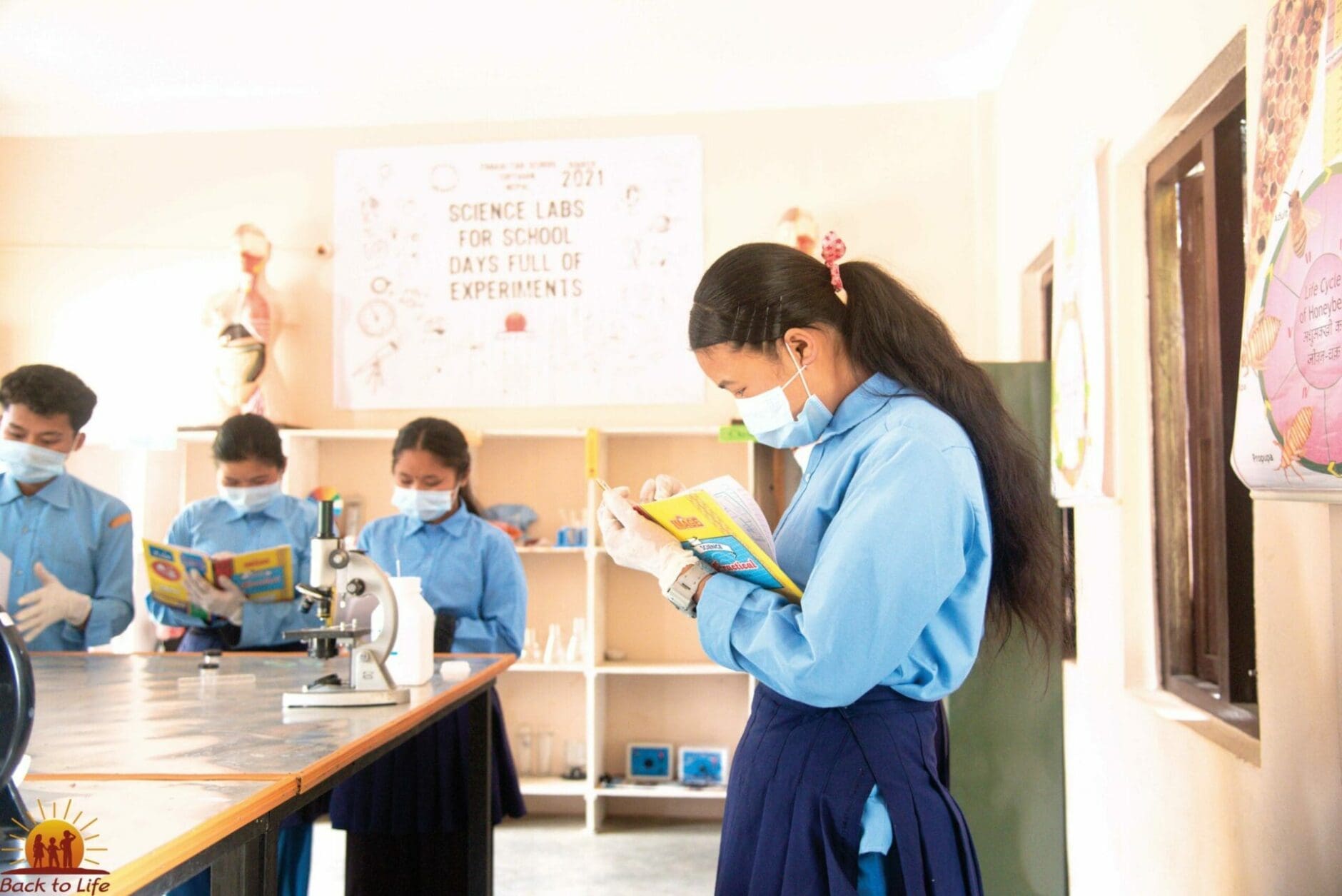
Pave the Way to Graduation
By constructing school buildings where they are urgently needed, we are strengthening the thin school infrastructure in the high mountains and in the countryside. This is done in consultation with the education authority, which guarantees the additional teachers for the schools we have built and expanded. Since 2009, Back to Life has built 36 school buildings with a total of 116 earthquake-proof classrooms in Nepal. We have already achieved several times by building a new school block that the school could be expanded by one grade. The students can now complete more school years than before and even achieve the Abitur in the remote areas of the high mountains.
Equipped Students
The students are happy about the new, bright and spacious classrooms, which we are equipping with whiteboards, school desks and benches. In schools with a power supply, we install smart TVs in order to make the lessons more modern and varied and to enable a view from the classroom into the wide world. In addition, Back to Life is setting up science school laboratories, school libraries and reading clubs. Around 7500 books are available to the students. Sports and games are not neglected either, some schoolyards now have playgrounds, much to the delight of the children. They didn’t know anything like that. Here you can just be a child.
Choose an amount:

Trained Teachers
In order to increase the quality of teaching, we support the teachers with up-to-date teaching materials and enable them to take further training courses. We also regularly repeat the earthquake safety training courses. The implementation of this training in everyday school life is regularly evaluated by our on-site team. The teachers in the remote areas are very motivated to continue their pedagogical training and to get the means to organize an interesting lesson. The Nepalese education authority asks us again and again to carry out our activities and trainings for the student body and teachers at other state schools.
As Important as the ABC
The overall health of children is important back to life. We organize regular examinations at schools by doctors to ensure that the students are and will remain healthy. Should a child need additional treatment, they will be taken to the nearest health center or hospital in consultation with the teachers and parents. If the parents cannot afford medical treatment, Back to Life will pay for it.
In every school we build, we provide gender-segregated and girl-friendly toilets and running water. The condition of the school buildings is being regularly checked by our on-site team.




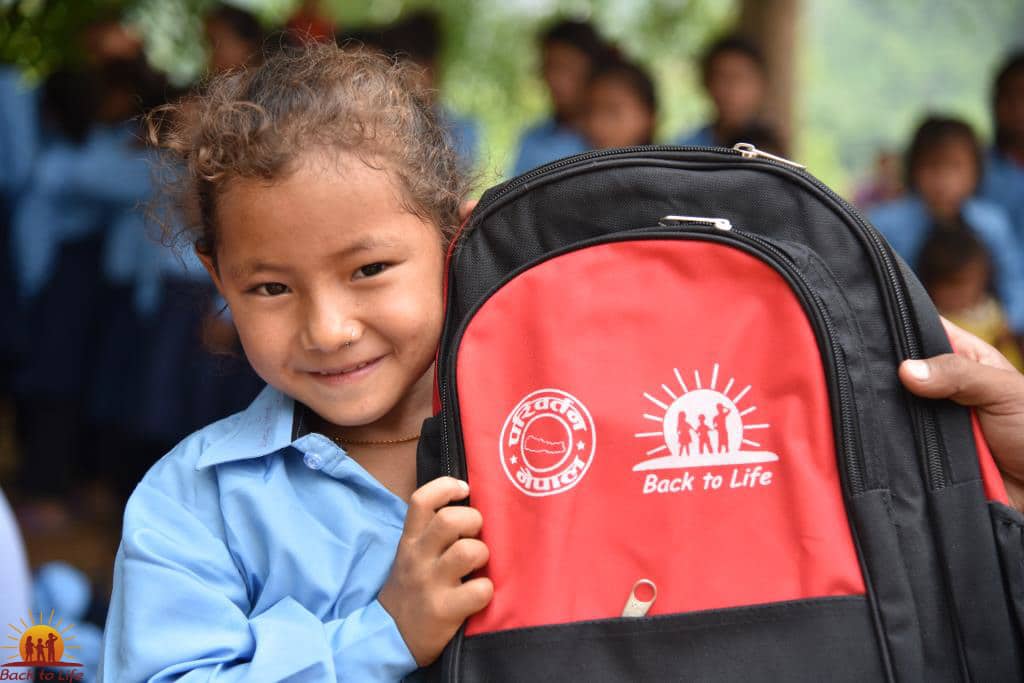





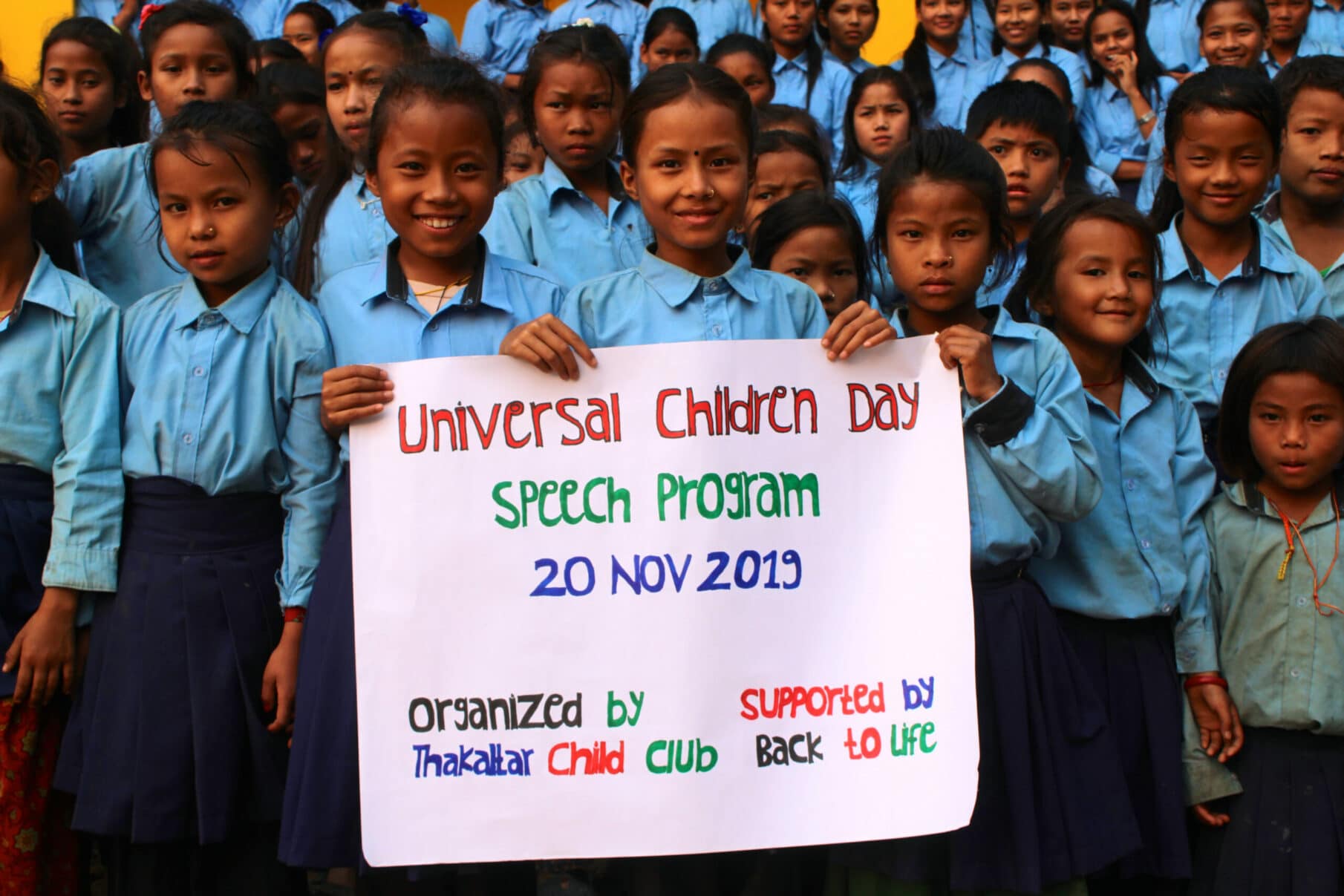

Preschool is good for children and adults
Back to Life has set up or supported 76 kindergartens for toddlers. 1188 little boys and girls are currently visiting. The committed educators strengthen early childhood development and introduce the little ones to learning in a playful way. The older siblings, who often had to look after them, finally got the opportunity to attend classes regularly.
Opening Up New Horizons
In order to educate the children beyond their regular school education, we have founded children’s and youth clubs. To this end, we offer various activities in which the children can design and participate themselves: training and awareness-raising campaigns on children’s rights, health and hygiene, environmental, climate and resource protection as well as creative workshops. In joint activities, they paint and design posters, green their schoolyard, plant trees, collect rubbish and introduce rubbish separation in their villages. Through the youth clubs, the children learn to stand up for themselves: especially for their right to education and a life without child marriage.
How do we succeed in ensuring that children from poor families can go to school permanently?
With the help of school sponsorships, Back to Life supports almost 4,000 children directly in the three project areas Mugu, Nuwakot and Chitwan – from pre-school to high school. In Nepal there are no school fees up to the 10th grade, but attending school is associated with high costs for economically disadvantaged families. Since Back to Life provides the children with school uniforms and shoes, school bags, learning materials such as books, exercise books and pens every year, we can secure their school attendance.
In addition, we offer the families in the project villages income support, for example through the construction and operation of greenhouses. If this support helps people to help themselves and provides the parents with an additional income, the children are free to attend school – even after primary school.
At some schools, Back to Life offers a balanced and freshly cooked lunch every day, with which every child can fill their stomach. This is also an important incentive for parents to send their children to school. At the same time, the school sponsorships promote and maintain the good equipment of the school, another motivation for some parents, because they can finally believe in a better future for their children. In addition, parents do not miss the fact that their school children are healthier.
What have we achieved so far?
School Buildings with 147 Earthquake-Proof Classrooms
School Libraries
Students Benefit
From Educational Initiatives
Teachers Trained
Student Dormitory for deaf and dumb Children
School Uniforms & Winter Clothing per year
Kindergardens for 1188 Small Children
Our successes
- Early childhood support through kindergartens
- More schooling, especially girls
- Improve the quality of teaching
- Several schools have been expanded to include additional grades
- Many children complete more school years on average than before
- School education is seen more and more as an alternative to child marriage
- Strengthening children’s rights
- Health care established in schools
Back to Life has been successfully promoting school education for over 10 years. Now, for the first time, we are accompanying two of our sponsored children on their way to university after graduation. You are a living role model for many girls. With your help, we can ensure that many more will follow.
Would you like to help and become a school sponsor?
Visit our schools virtually
Impressions






















